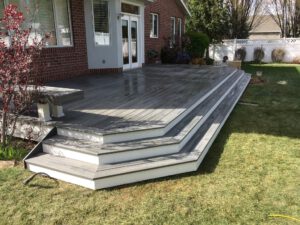How to Build a Deck
Decks Summerville SC are flat surfaces that support weight and are usually constructed outdoors. They are raised off the ground and attached to a building. Their name comes from the deck of a ship. Decks are functional and pleasing extensions of your living space. To build them, you must first construct a framework that will support them.
Decks are used for post-production in various ways. The software includes tools to edit audio and video. It also features a built-in CD-audio importing feature and multiple sample-rate algorithms. This program also comes with a brilliant continuous zoom function. Its user-friendly interface is impressive. One of its shortcomings is the lack of scrubbing.
Despite these limitations, the deck has many other features. It supports any sample rate and provides four bit-conversion options, including decent dithering. The program has auto-locate registers and markers, and it allows you to save up to 16 tracks in a single interface.
Wood is the most common material used to construct decks, but there are other materials that you can use. These materials include bamboo, cedar, ipe, and teak. Many of these materials are sourced from tropical forests, and much of the logging is illegal. Due to the demand for decking in the US, the import of tropical wood has risen substantially.
Different materials have different pros and cons. It is important to choose the right material based on your personal needs. Depending on your budget, you can choose between traditional wood, composite wood, or modern plastic materials. The type of material you choose will depend on how durable you need your deck to be.
Wood decks require more maintenance than composite or vinyl decks. You may need to power wash, re-seal, or paint it periodically to keep it looking nice. However, composite and vinyl decks require less maintenance and will last for a longer time. Although wood decks require more upfront costs, they can bring you a huge return on your investment.
The most basic component of deck construction is the framework. A deck’s framework can be either conceptual or practical. A conceptual framework describes the underlying idea behind the deck, while a practical framework defines the legal cards best suited to execute its fundamental strategy. For instance, in T2, a framework for the Jund might be the most effective piece of spot removal in the game.
A framework is essential for building a safe deck. It is necessary to adhere to building codes in order to avoid any possible structural damage. Specifically, 2021 IRC section R507 addresses footings, posts, beams, joists, and fasteners. Local governments may also publish their own codes based on the national IRC.
Before building a deck framework, make sure you have a building permit in hand. It is also necessary to follow the same steps as a professional builder. The framework must be level and dry, and it is crucial to have all the details correct before constructing the framework. If you’re not sure how to proceed, ask a professional to help you.
Posts, for instance, must be anchored to the joist sides. This is done by installing 1/2-inch bolts or hold-down anchors rated at 1800 pounds. Also, it’s prohibited to fasten supports directly to the end grain. Additionally, 4×4 wooden posts should not be notched. The framework and posts must be connected so that they don’t move while the deck is in use.
A deck is attached to the house using a system of supports called a ledger. The ledger supports one side of the deck, and the deck itself rests on posts (called piers). Piers are a series of pre-cast concrete pyramids that are set on footings in the ground. Posts are secured to the piers using post anchors, which raise the base of the post above the footing and prevent water damage.
Ledger boards are the most common point where decks fail. These connections are often prone to water damage, and if they fail, the water can enter the home. Therefore, it is important to make sure that the ledger board is properly flashed. Also, vinyl spacer pins must be used to prevent leaking.
During the construction phase, you should place the ledger between the deck joists and the wall. You can use a self-adhesive flashing material to help prevent ice and water from collecting. The ledger must also extend at least 4 inches above the wall’s marking.
